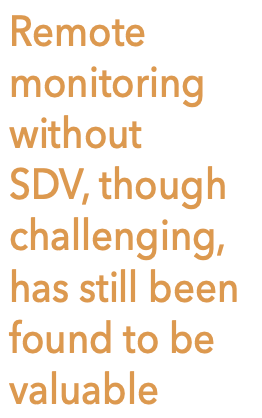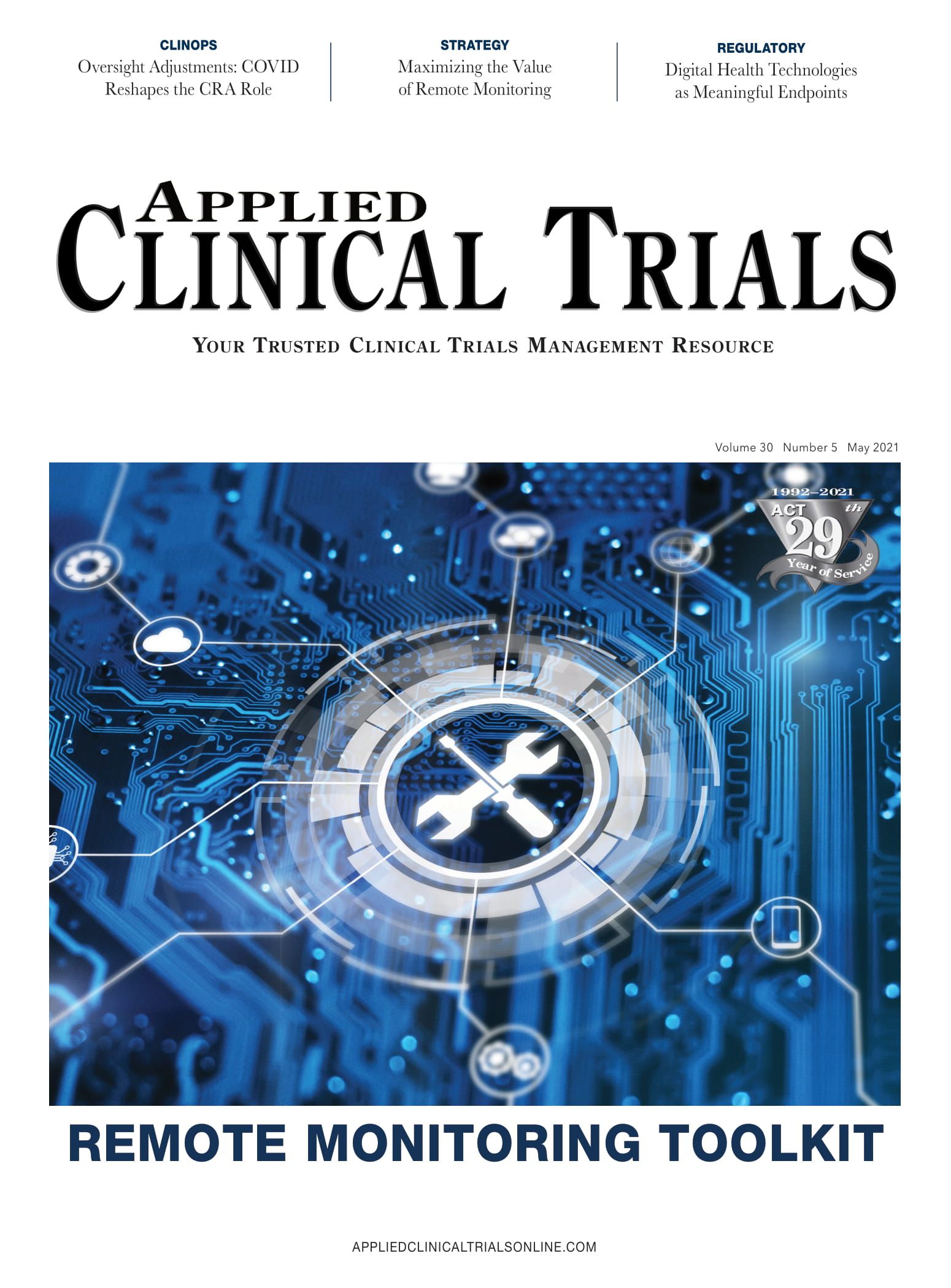Navigating New Changes During the Pandemic
COVID-19 reshaping the roles of CRAs overseas as industry shifts to remote monitoring.
Clinical Research Associates (CRAs) are in the unique position of working directly with sites to support and actively observe the progress of sites and their patients when participating in a clinical trial. During the height of the COVID-19 pandemic, this core aspect of a CRA’s role was altered greatly, with many sites unable to continue research and/or unable to accommodate visitors, therefore forcing a change in the method of monitoring source documentation and challenging their relationship with site staff. Being prepared for remote monitoring, it was important that I carefully navigate this new change with my sites and ensure they felt fully supported and comfortable throughout.
As healthcare workers have had to adapt to the ongoing public health crisis, the CRA role has also had to accept and support site adaptation to new trial elements. As a CRA in the UK, I worked with sites on implementing these new methods of data collection and patient oversight, including direct-to-patient study drug shipments, use of home health services, and far more reliance on patient symptom reporting than pre-pandemic. A CRA’s role in reviewing and verifying study data has adjusted to being conducted entirely remotely for many studies, which has certainly not been without its challenges.
The work of a good CRA is invaluable to a successful clinical trial and is bolstered by a strong relationship with the clinical staff at the site. CRAs have had to adapt to regulatory changes, client guidance, and the changing site needs, assisting sites with new methods of performing subject visits and capturing data, and working closely with investigators to support their management of trial subjects. Our role as an advocate for our sites and their patients and our skill of understanding the trial and its challenges from both the sponsor and site’s sides is more important than ever. Though sponsors, CROs, and sites all share the same core purpose in research for improving the lives of our patients, the practicalities of running a trial are often what sets us apart. Protocol mandated procedures and methods of data collection, though seemingly straight forward, have met challenges at sites when faced with hospital visitor restrictions, government travel restrictions, the risk of COVID-19 associated with visiting hospital, vulnerable patients, redeployed staff, limited time…the list goes on! This in turn has only cemented my knowledge that collaborative working and a good relationship between a CRA and their sites is crucial to the integrity of the trials and their patients.
Additionally, sponsors had to be flexible and adapt their trials to sites, recognizing the pressure sites are under and following their lead in prioritization of their clinical needs in times of huge clinical demand. Many research staff were redeployed to assist in other clinical areas, recruitment onto many research studies was put on hold, opening of new studies was halted at times, and subject visits were frequently cancelled or delayed to reduce the risk to vulnerable patients. The decision to halt and restart clinical trial visits and recruitment through the peaks and troughs of the pandemic lay with the institutions themselves, who were best able to assess their capacity and capability for individual trials and study teams.

Alongside the CRA’s role in supporting sites, their typical role in conducting source data verification (SDV) and monitoring of study sites has had to adapt to remote monitoring. Remote monitoring was introduced to enable CRAs to access source data and conduct monitoring visits without travel to the site. Though the industry is moving towards a decentralized model including more remote practices, this was mostly a new method of monitoring for sites and presented many challenges. Remote monitoring visits are being conducted with and without SDV. The decision about whether SDV can be done is based on a number of questions:
- Does the site use Electronic Medical Records (EMR)? If so, is EMR used for all medical records, or part paper, part EMR?
- Does a CRA get direct access to source EMR for consented patients? If so, is their EMR set up to be accessed off-site? Can CRAs get access remotely if so?
- Is remote monitoring approved by local and central authorities?
From my experience in the UK, the majority of remote monitoring performed during the COVID-19 pandemic has been performed without SDV due to challenges in meeting the necessary criteria. When it has not been possible to access a site’s source, remote monitoring has allowed site monitors to continue to review the electronic data capture and vendor reports and hold regular discussions with their sites to review study and subject progress. Remote monitoring without SDV, though challenging, has still been found to be valuable in highlighting and resolving issues, maintaining good working relationships with the sites, ensuring data is entered, training site staff, and ensuring the ongoing success of the study.
At times when a CRA is able to access full source documentation remotely via EMR, CRAs have been able to continue on their core role monitoring data, ensuring the integrity, accuracy, and validity of data, and the safety of patients. In cases when CRAs are given remote EMR access, often not all source is electronic and there is no access to paper notes, therefore the complete SDV cannot be done. In these cases, when CRAs can return to sites, they will need to review subject visit source documentation which has been completed remotely with access to all subject records including paper notes, to ensure nothing is missed.
Full SDV is considered “gold standard” for remote monitoring, and my discussions with my colleagues indicate that this approach is more developed in many countries in mainland Europe due to them having an appropriate EMR system which is accessible remotely. The situation in the UK has resulted in a substantial backlog of data to be monitored, which will take several months to clear, and that backlog, for many studies, appears to be noticeably less in many mainland European countries. From my discussions with staff at the sites, it seems that the installation of an EMR system may not be sufficiently high on the priority list to be awarded funding by individual sites or trusts. The UK government has pledged increased financial support for research within the NHS, and from a remote monitoring perspective, it would be ideal if some of this funding went into a single pan-UK EMR system or, if that proves impossible, multiple EMR systems which can seamlessly “talk” to each other. Examples of both arrangements already exist in many countries in mainland Europe, and satisfy GDPR requirements sufficiently to allow trial monitors to access relevant records remotely to perform SDV.
As sites adapted to remote monitoring and continued to accommodate monitoring visits when possible during the COVID-19 pandemic, another challenge arose around EMR access. In some instances, EMR access is given directly through a web-based system the CRA can log into independently; at other times a member of the site study team screen shared the EMR remotely. Screen sharing has its own challenges, as it relies on the study coordinator’s time, which is especially limited during the pandemic. Additionally, it was necessary to have an open and honest relationship with the study coordinator, as the study coordinator had to follow requests from the CRA to navigate the source documentation for a reliable and full review.
Though this period has been challenging for monitoring clinical trials, it’s clear those who were able to adapt and learn from this pandemic will only go on to further trial success in the future, strengthening their relationships and building their skills in advanced trials innovations as the industry moves to a more decentralized model.
Alice Agnew, Clinical Research Associate III, Pediatric Site Network—UK Site Relationships Manager, PRA Health Sciences

What Can ClinOps Learn from Pre-Clinical?
August 10th 2021Dr. Hanne Bak, Senior Vice President of Preclinical Manufacturing and Process Development at Regeneron speaks about her role at the company as well as their work with monoclonal antibodies, the regulatory side of manufacturing, and more.
What Can ClinOps Learn from Pre-Clinical?
August 10th 2021Dr. Hanne Bak, Senior Vice President of Preclinical Manufacturing and Process Development at Regeneron speaks about her role at the company as well as their work with monoclonal antibodies, the regulatory side of manufacturing, and more.
2 Commerce Drive
Cranbury, NJ 08512
All rights reserved.